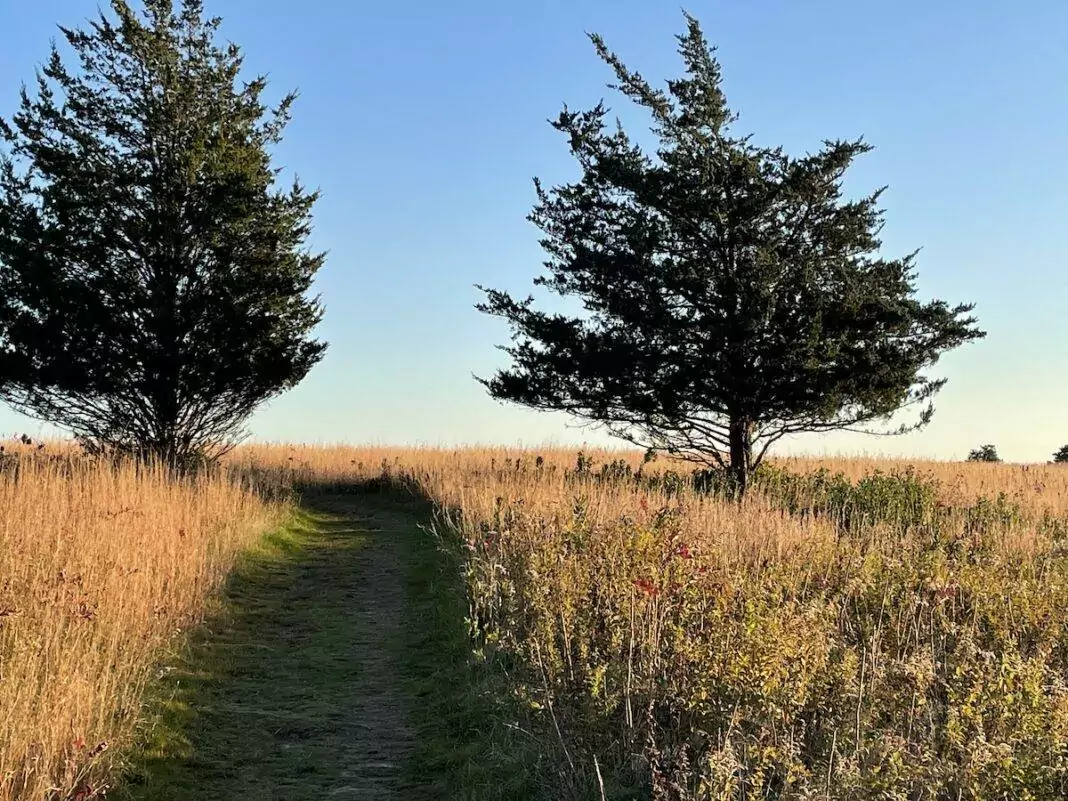To: Bluedot Living
From: Tim Boland, Polly Hill Arboretum
As I explore the winter landscape of Martha’s Vineyard, one of my great joys is noting the diversity of forms and colors of our native red cedar, Juniperus virginiana. Abundant on the Island, red cedars grow in fallow fields, along fence lines, and in numerous other sunny locations where they are able to establish themselves. The tree commands attention for its distinctive individuality, and here on the Vineyard and elsewhere over its wide range in eastern North America, its columnar habit punctuates grassy fields and serves as a reminder of both our agricultural past and the pioneering spirit of nature.
The juvenile foliage of the red cedar, often described as “awl-like,” has a piercing-sharp point at the apex of each leaf or needle. This characteristic helps to protect the new growth from animal browse. The foliage matures to a scale-like shape, flat and smooth, and not so prickly. The tough, waxy outer coating of the mature needles is an adaptive strategy that reduces water loss, giving this tree a drought-tolerant constitution. In a well-drained and sunny location, few trees offer the resilience of an established red cedar. As the tree endures season after season of drought, salt spray, wind, rain, ice, and snow, it develops its own unique character; the rewarding punishment of time.
.
Vineyard birds relish the waxy, metallic-blue cones produced by female trees; indeed, the cedar waxwing is one of the red cedar’s most fervent fans. The fleshy cones are often described as “berrylike” and contain one or two hard-shelled seeds that mature over the course of one season. In the winter months, yellow-rumped warblers, European starlings, gray catbirds, and northern mockingbirds consume the fleshy seed cones. The Bohemian waxwing, which has only been recorded on the Island three or four times, has also been reported feeding on red cedar. Local naturalist Matt Pelikan reports that a beautiful butterfly called the juniper hairstreak (Callophrys gryneus) feeds on the leaves of the red cedar. In Matt’s words, “The hairstreaks are reasonably common on Martha’s Vineyard with a flight in May and another in late July/early August. It’s rare to find a juniper hairstreak more than a few yards from a red cedar, and they spend most of their time perched on the tips of branches. The classic way of finding them is by shaking a cedar tree to make the butterflies fly off.”
Because red cedar is ubiquitous in the natural landscape, homeowners may neglect its use in the cultivated landscape where its tough adaptive characteristics and its beautiful ornamental qualities could be more widely employed. Its usefulness as a screen or wind buffer should not be overlooked, although deer browsing often results in a lower skirt of damaged branches on larger plants. Should this occur, gardeners can simply cut back the damaged twigs or branches to the trunk to reveal its handsome gray-brown exfoliating bark. In addition to its landscape value, the wood of the red cedar is prized for fence posts, pencils, and cedar closets.
Keep an eye out this winter for the diversity of cedars that populate the Island. Also, be sure to visit the Polly Hill Arboretum to see our native red cedars and enjoy the diversity of other conifers growing in our collections.
Contributions from Matt Pelikan, BiodiversityWorks — Martha’s Vineyard Atlas of Life Program Director, republished in parts from Meristems, the newsletter of the Polly Hill Arboretum.

